DXY reversed its losses Friday night, EUR was clubbed, CNY eased:
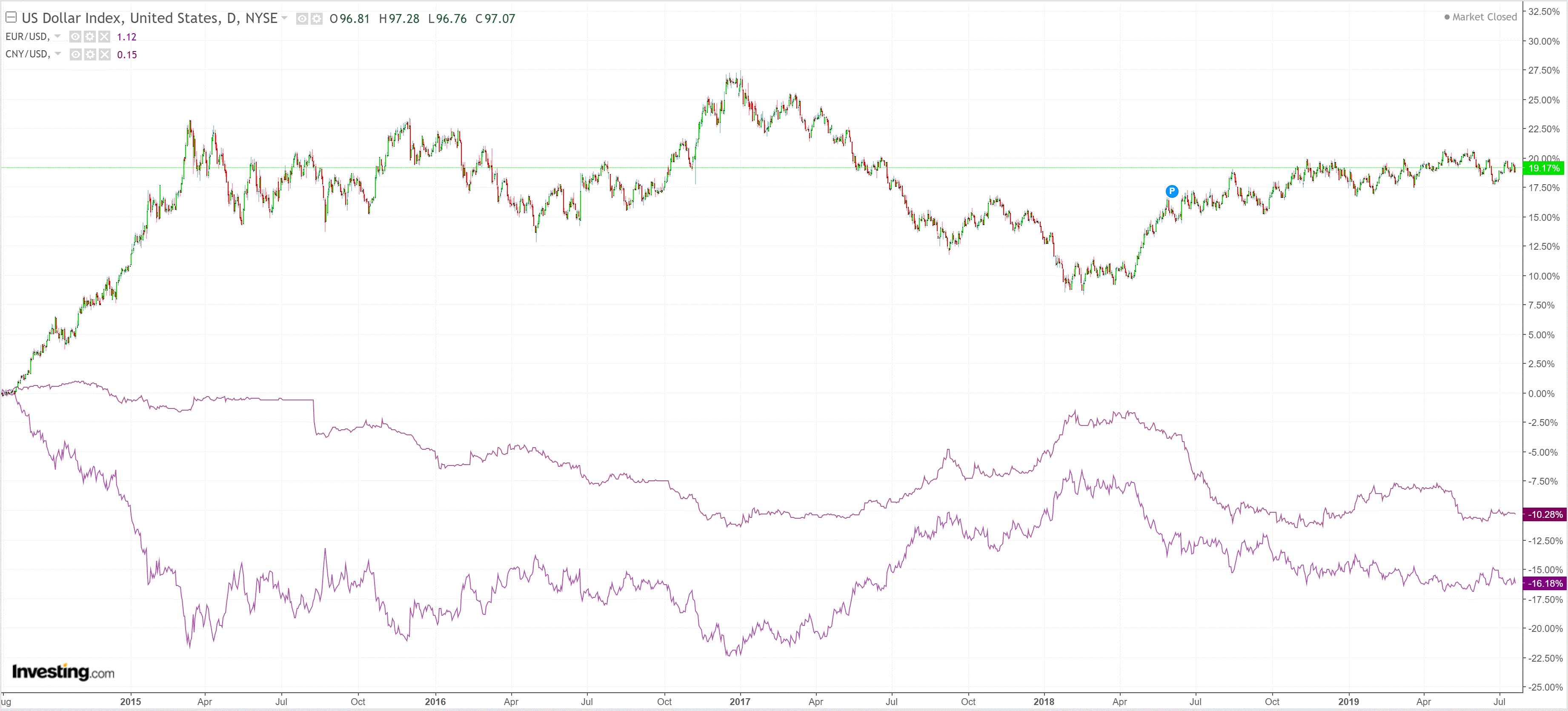
The Australian dollar was clubbed lower but held former resistance as support:
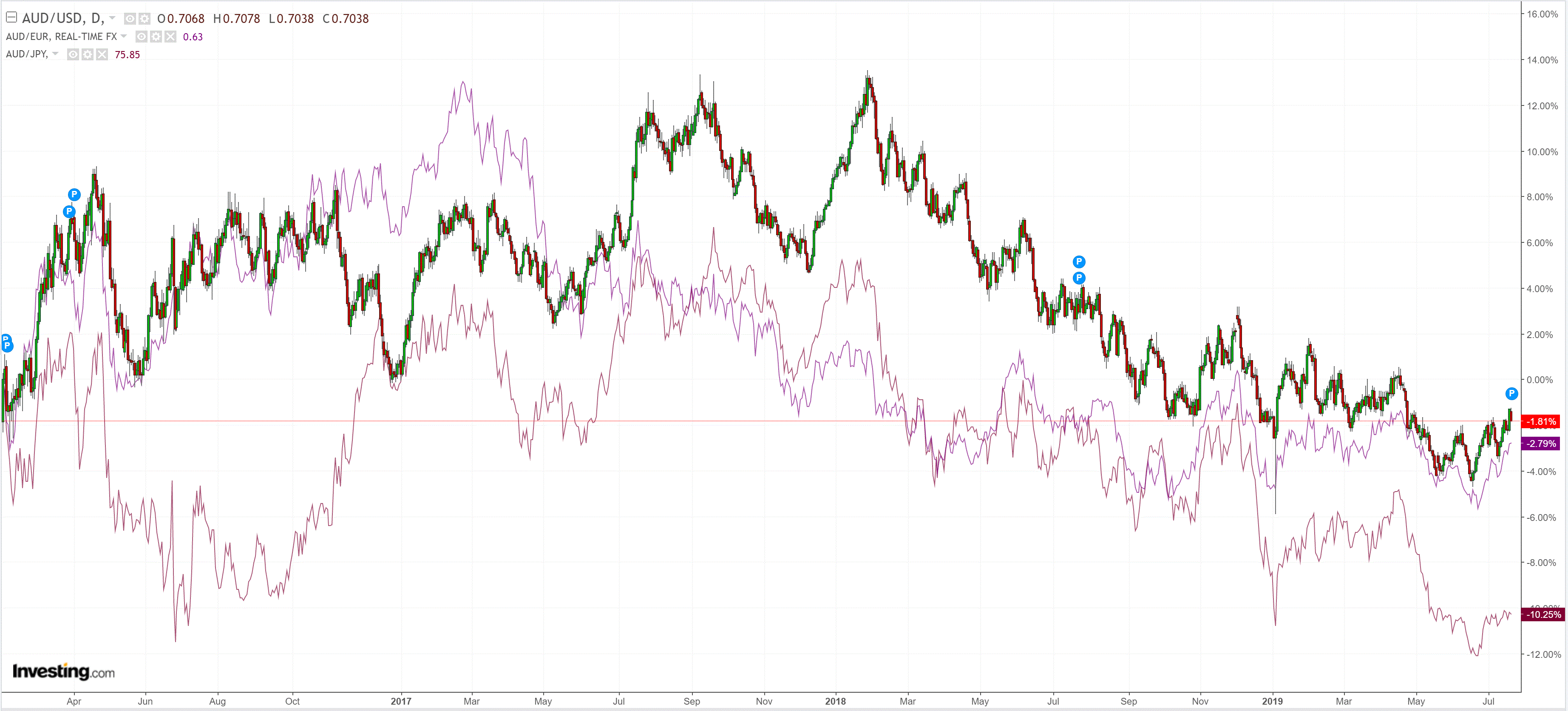
It was stronger than EMs:
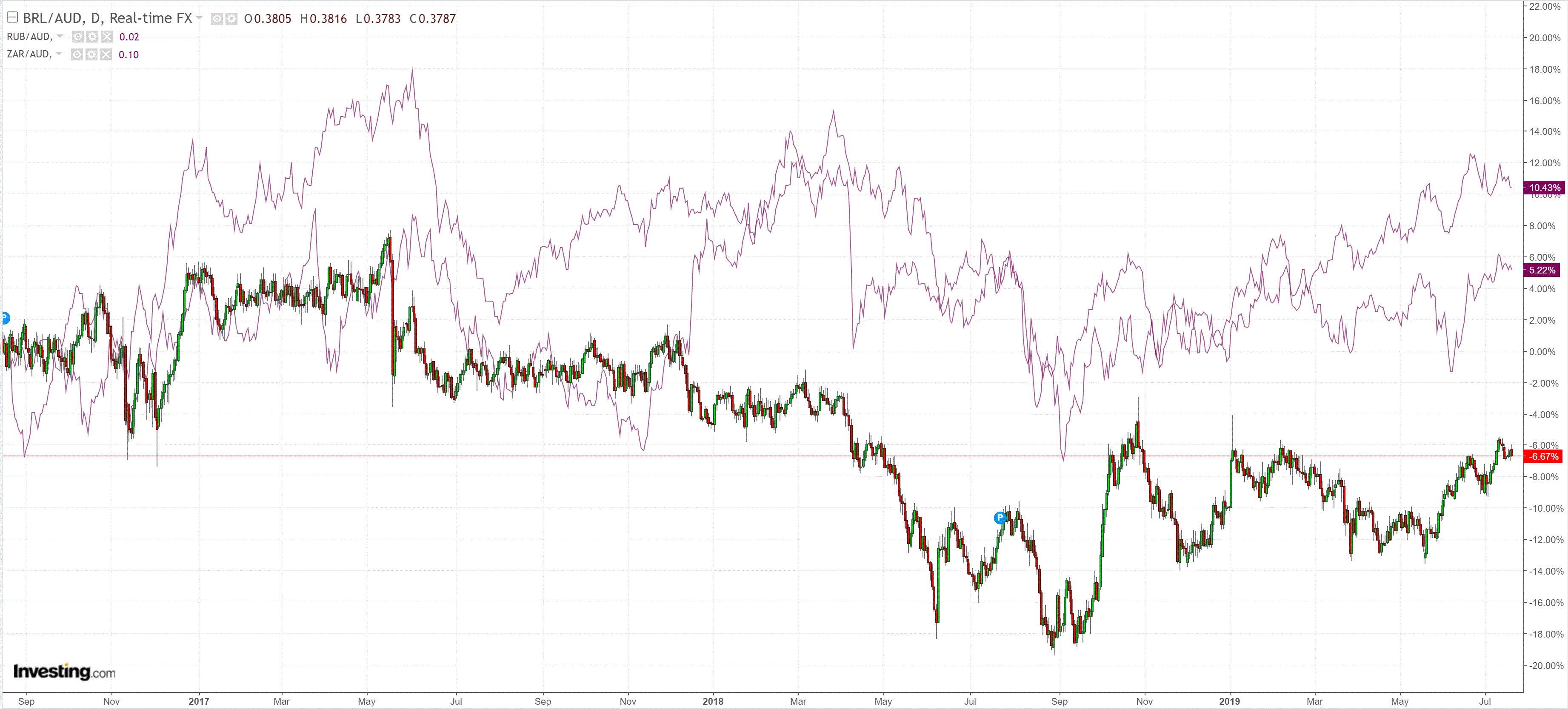
CTC net positioning is has eased from a deep short:
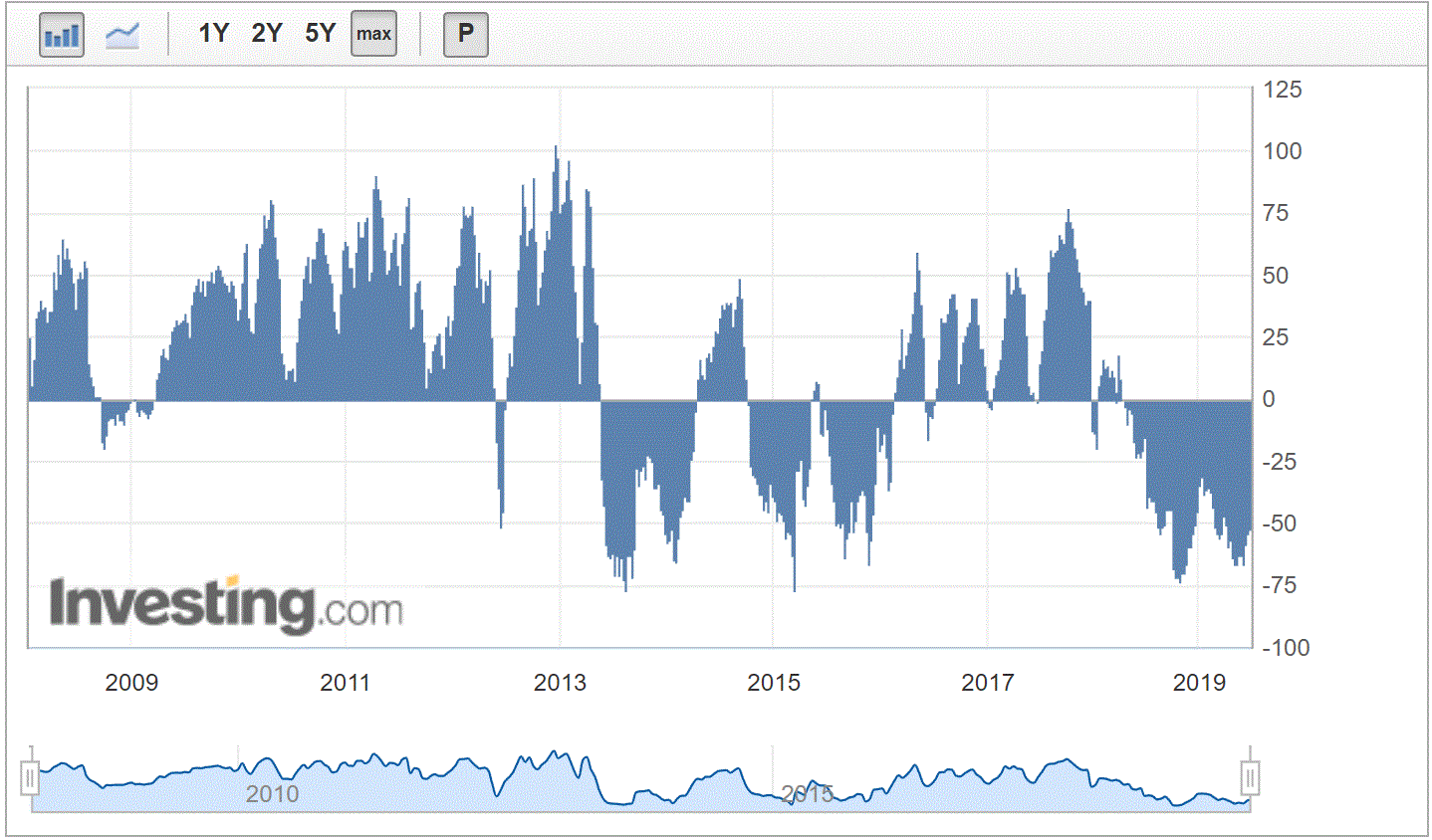
Gold fell:
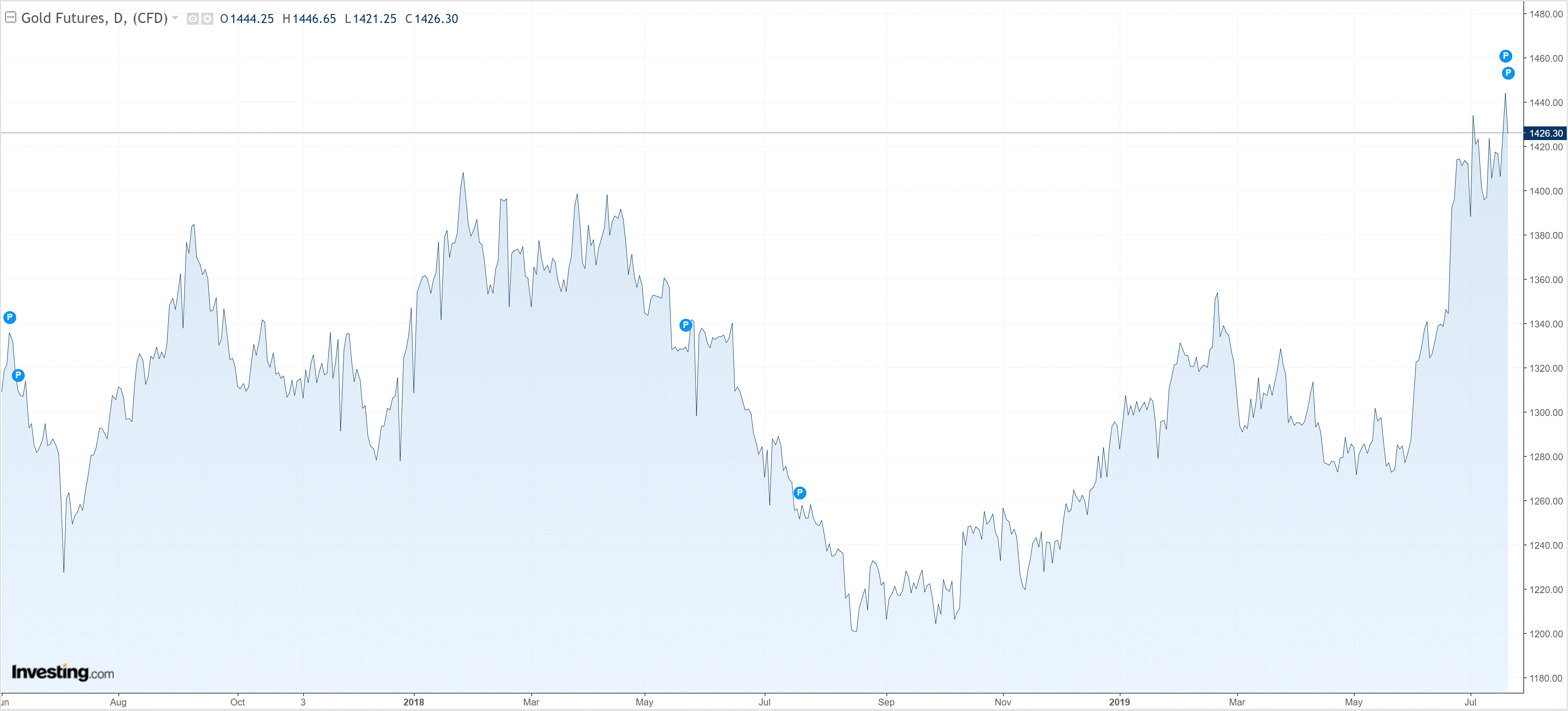
Oil lifted as Iran seized a UK tanker:
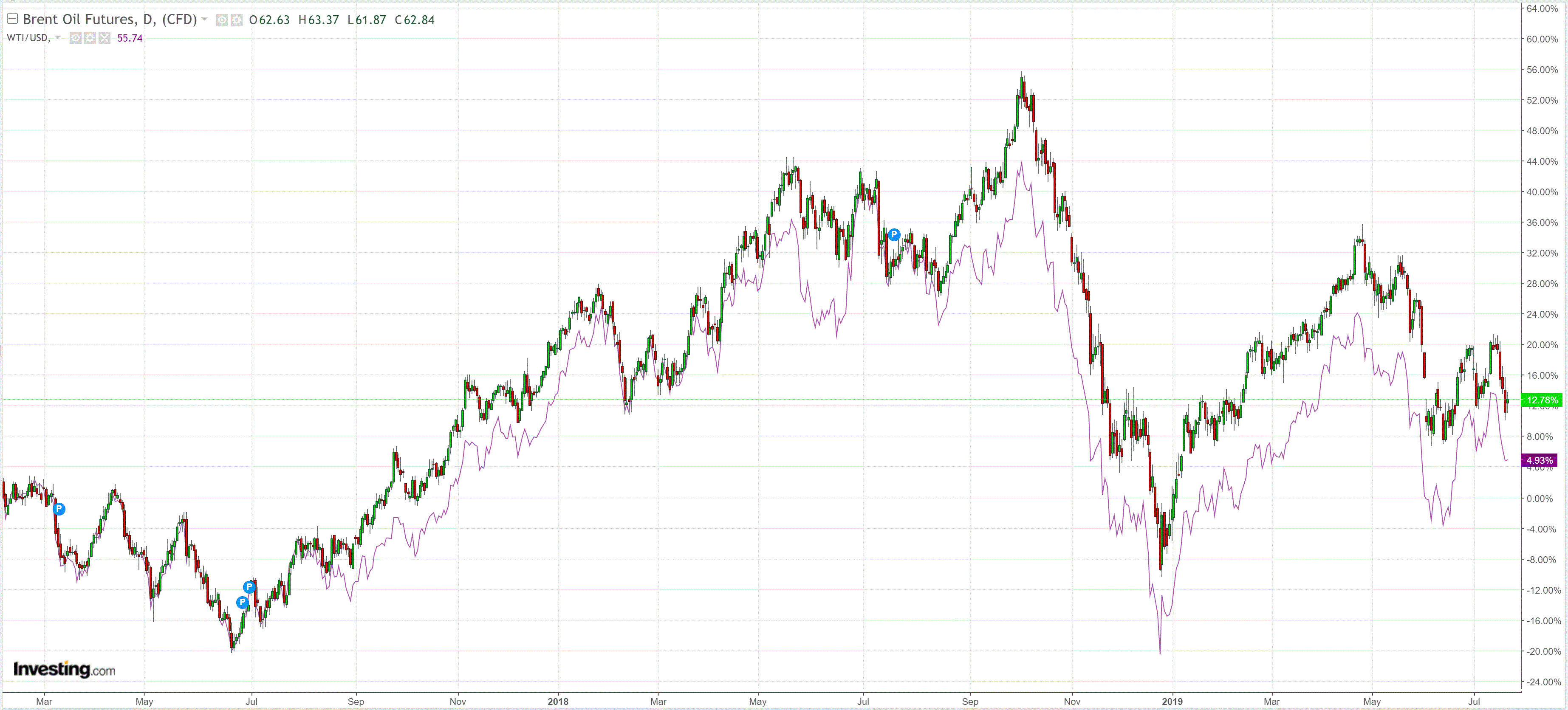
Metals were mixed:
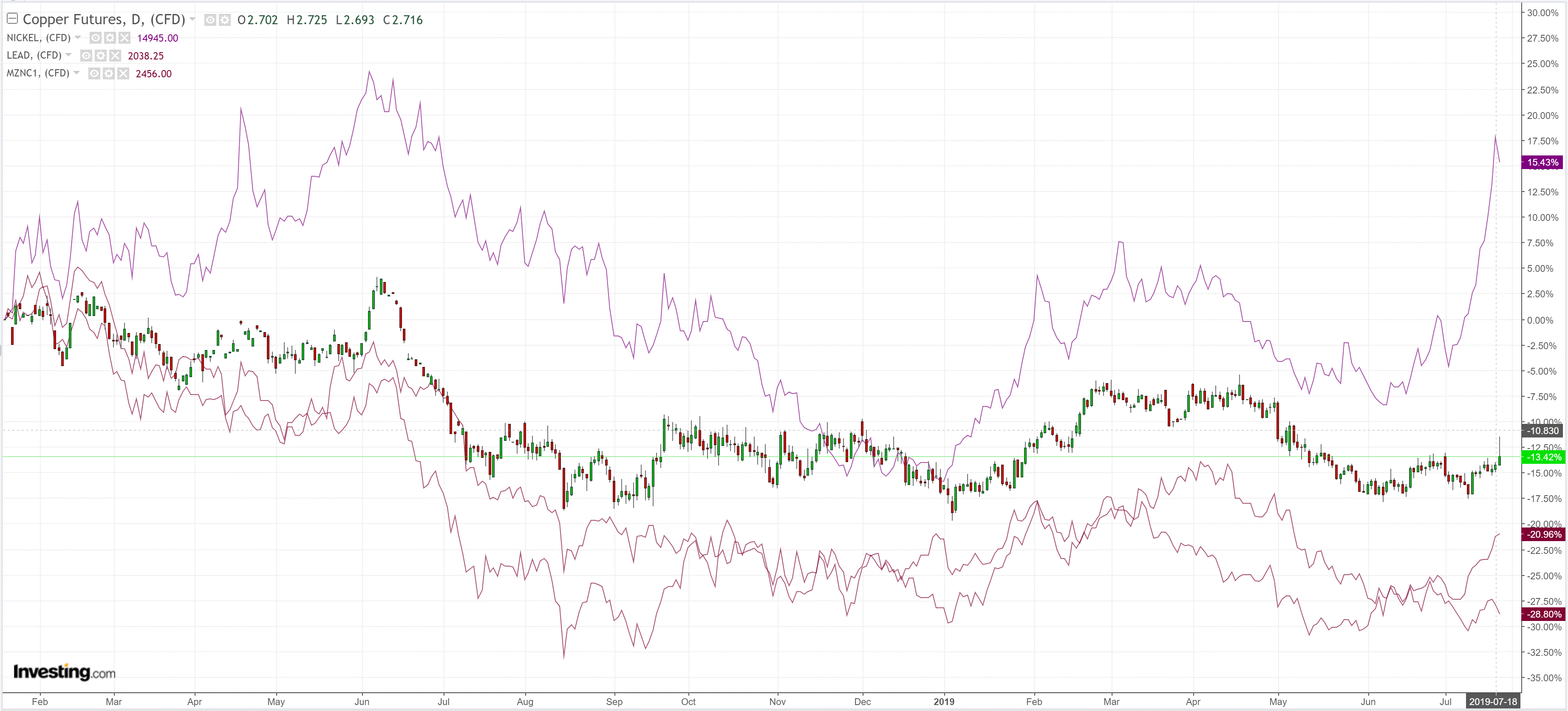
Big miners firm:
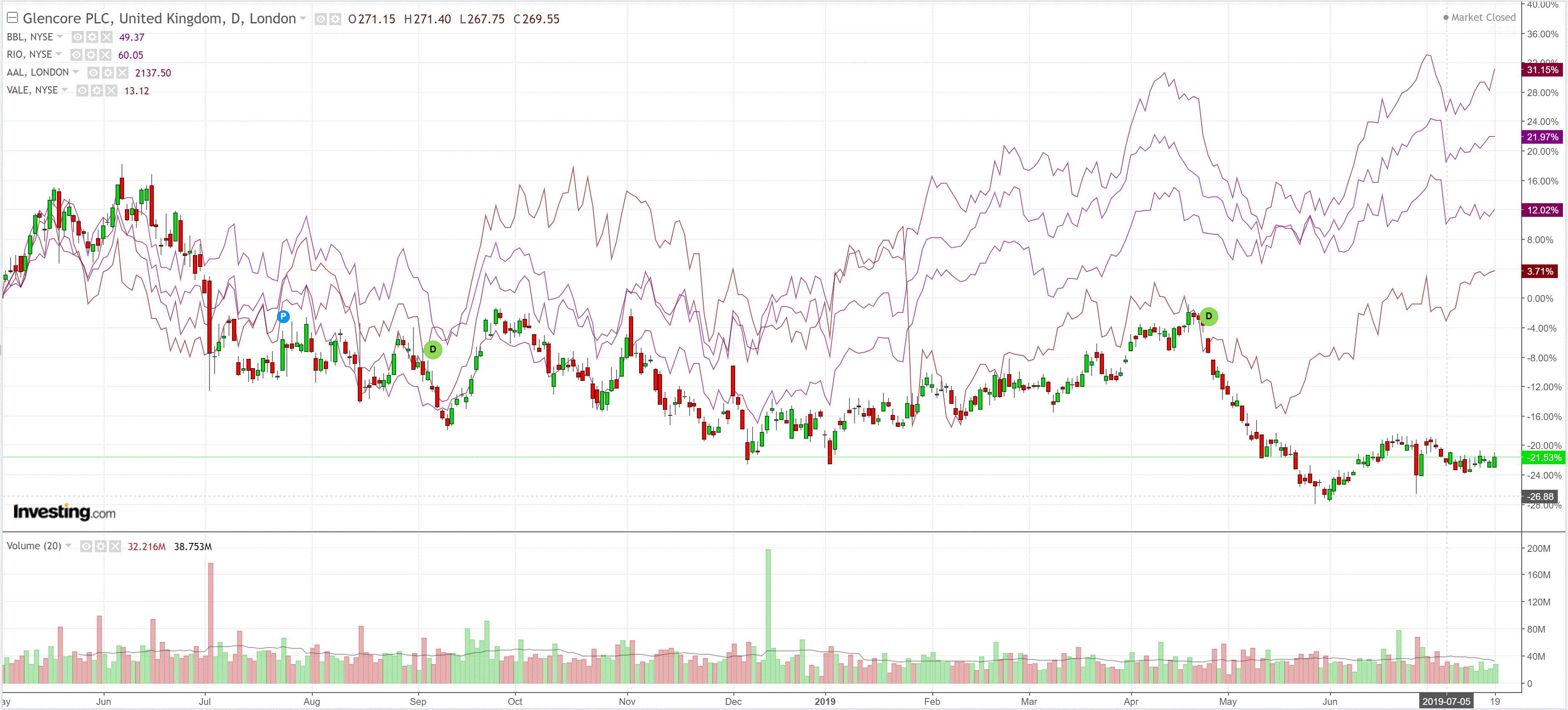
EM stocks soft:
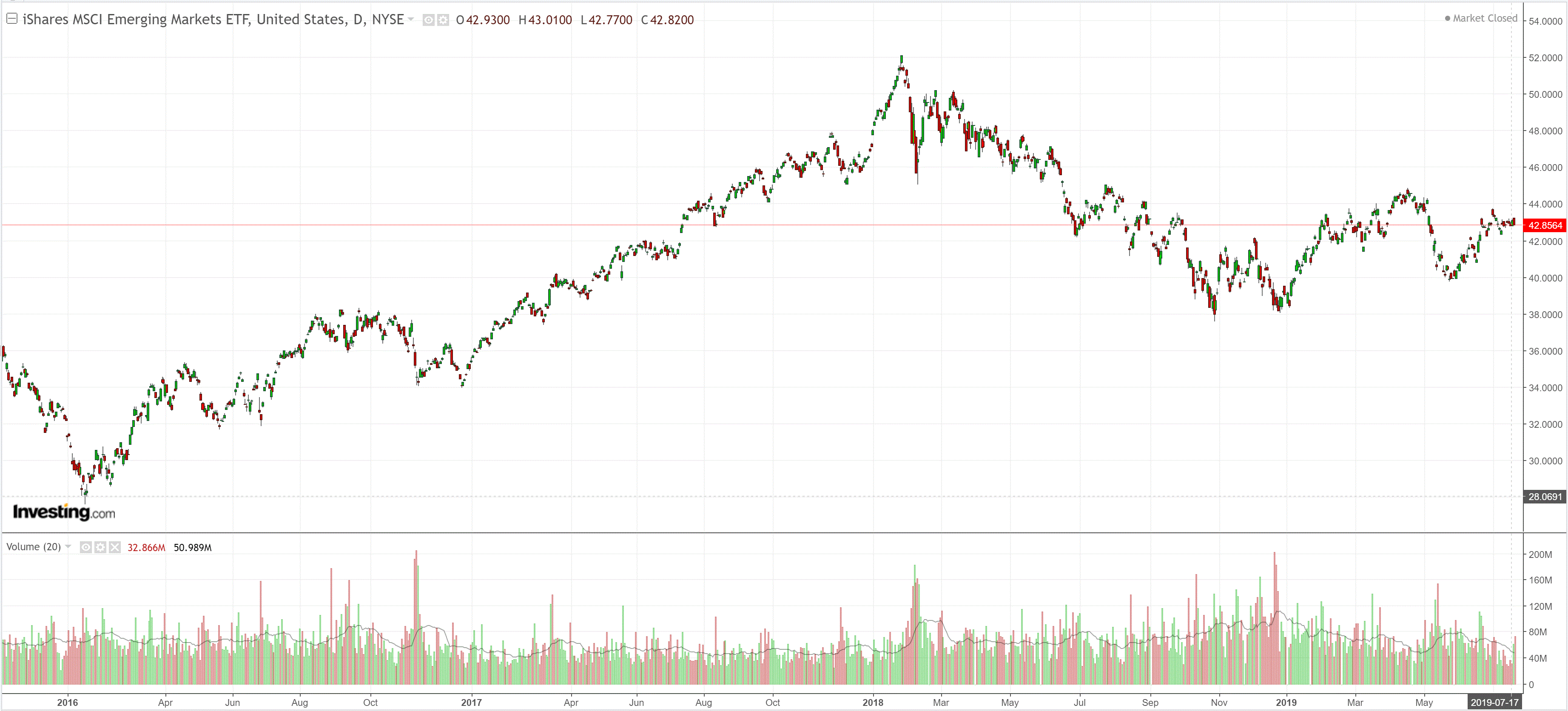
Junk fell again:
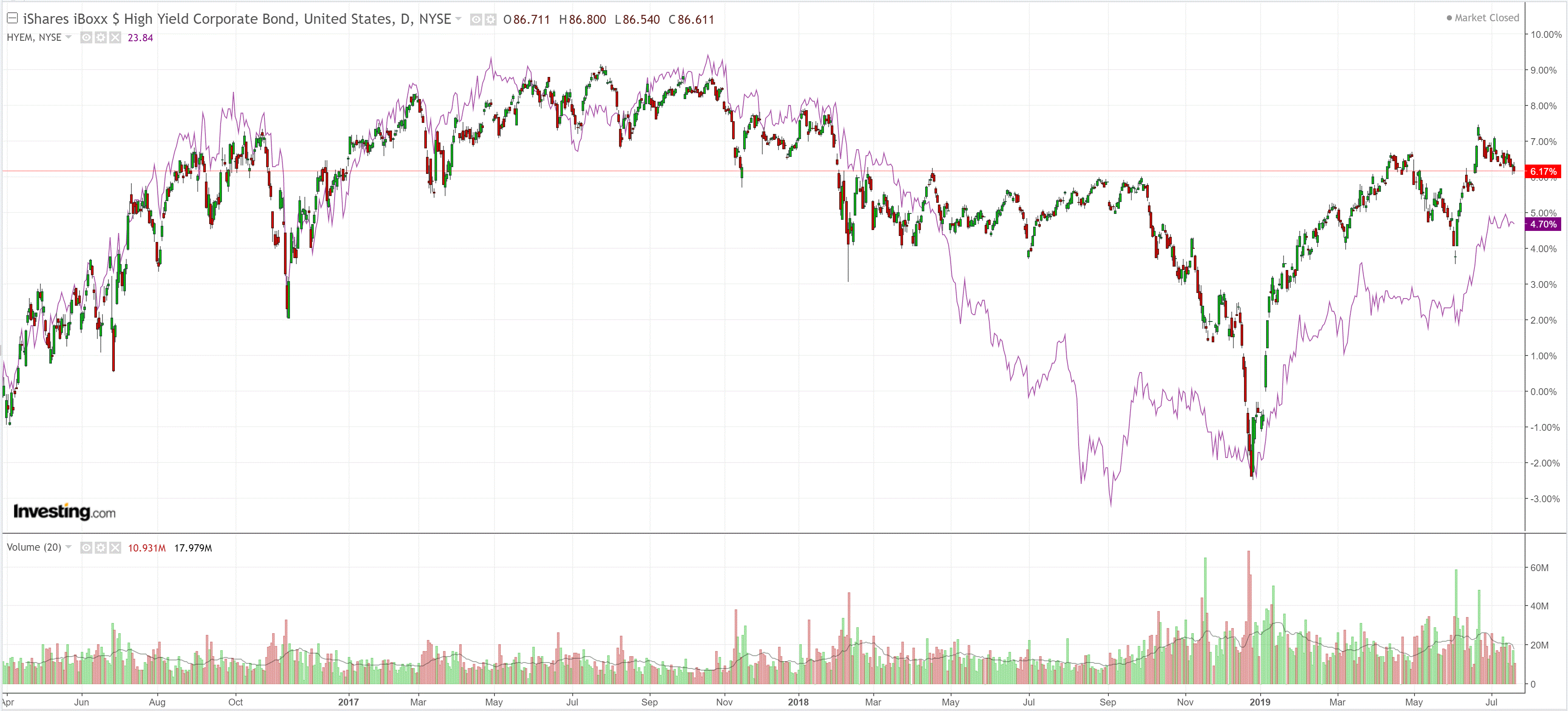
Treasuries were sold bigly:
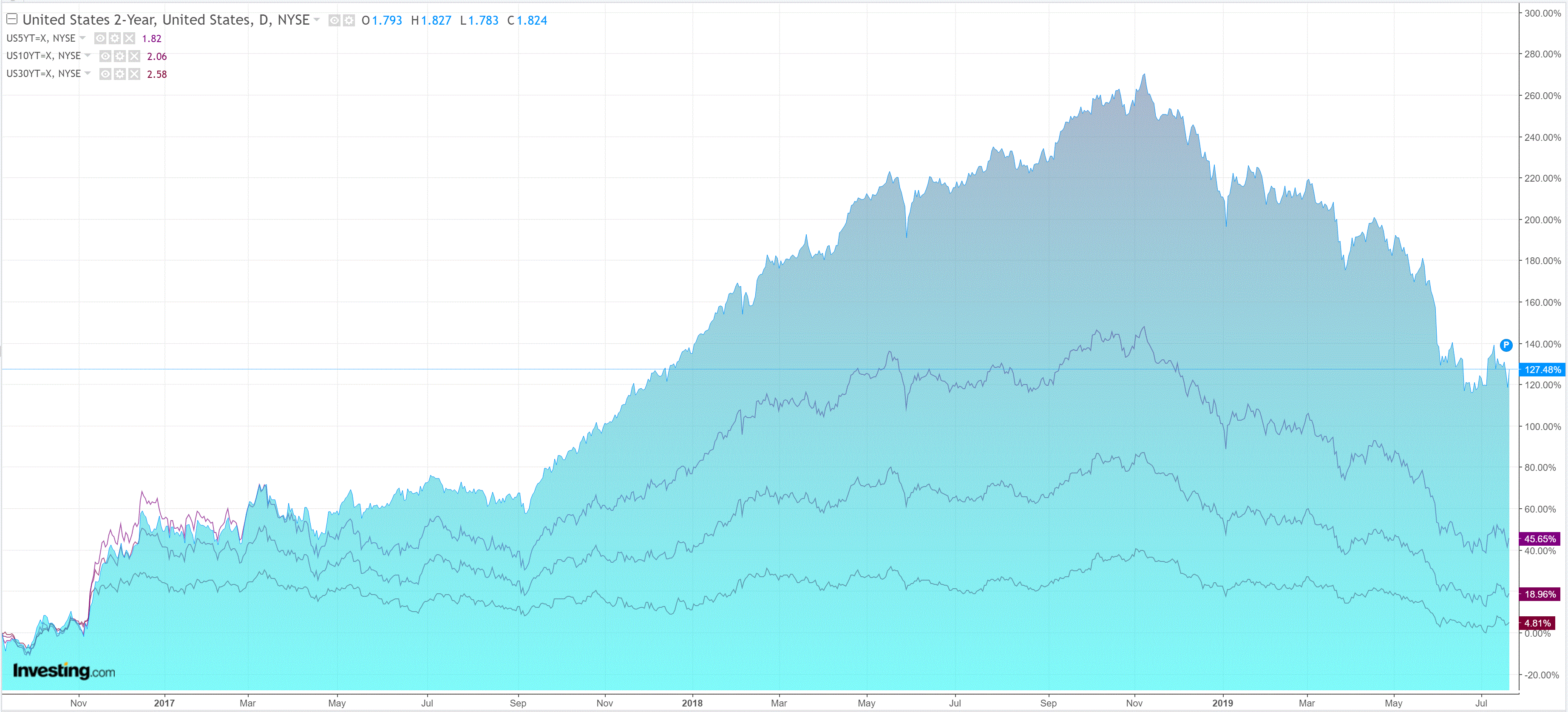
Bunds were bought bigly:
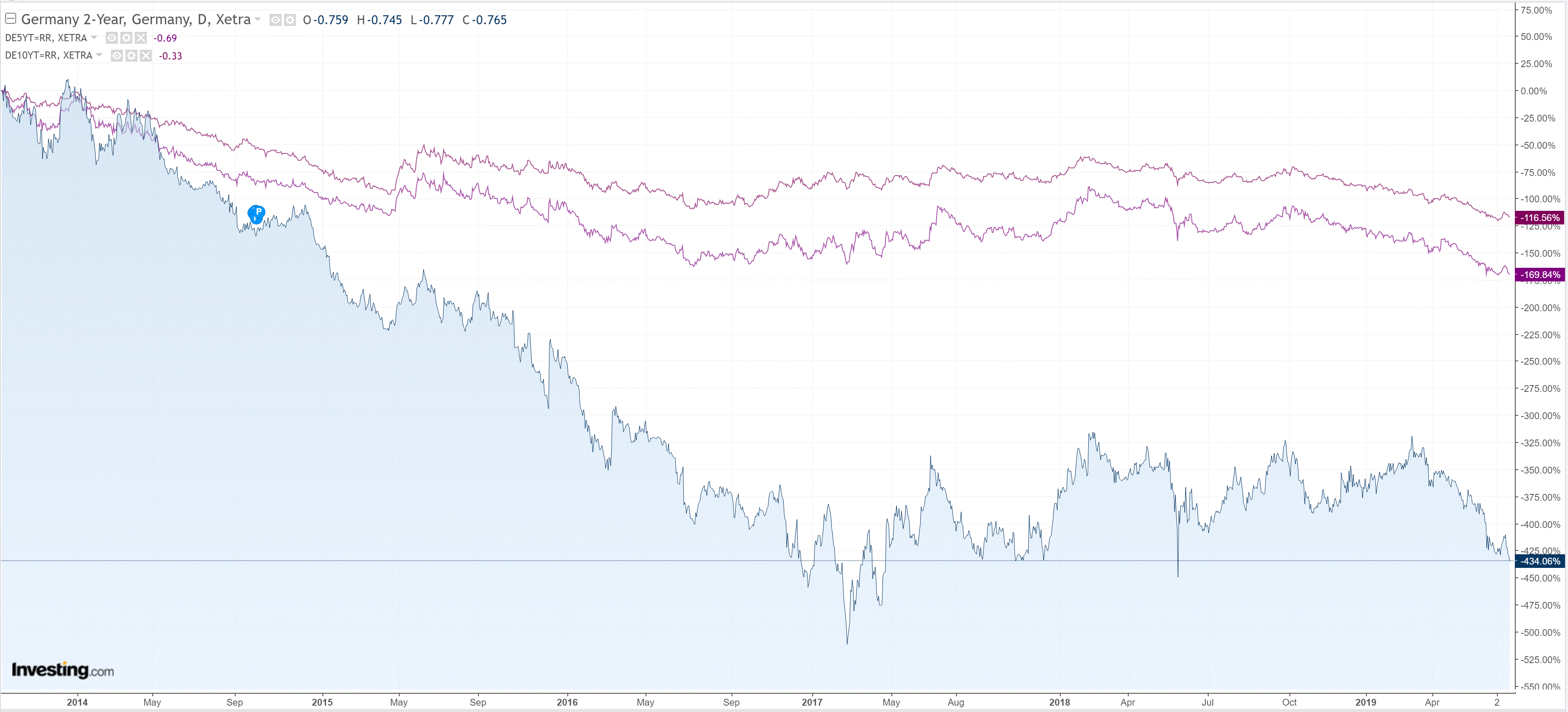
Aussie debt was in the meddle:
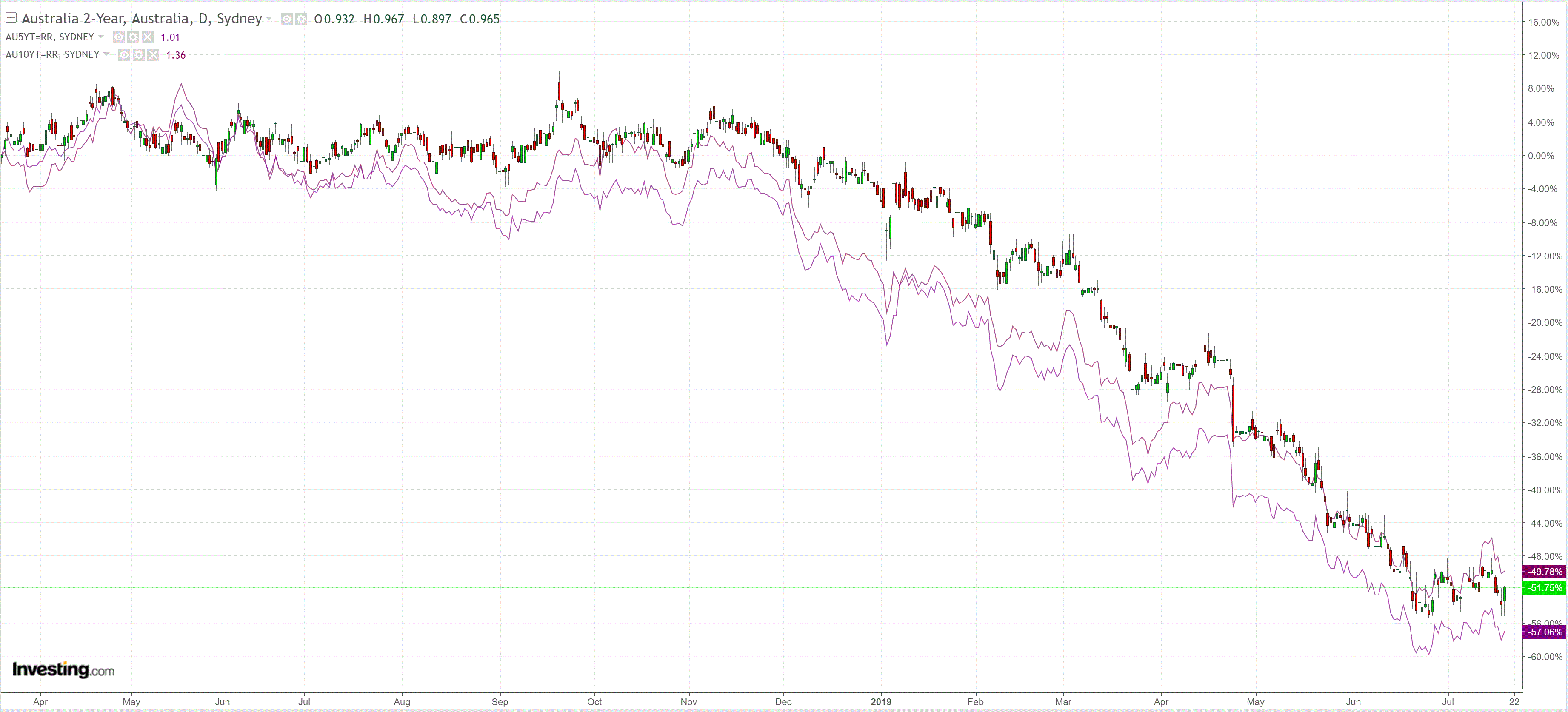
Stocks copped it:
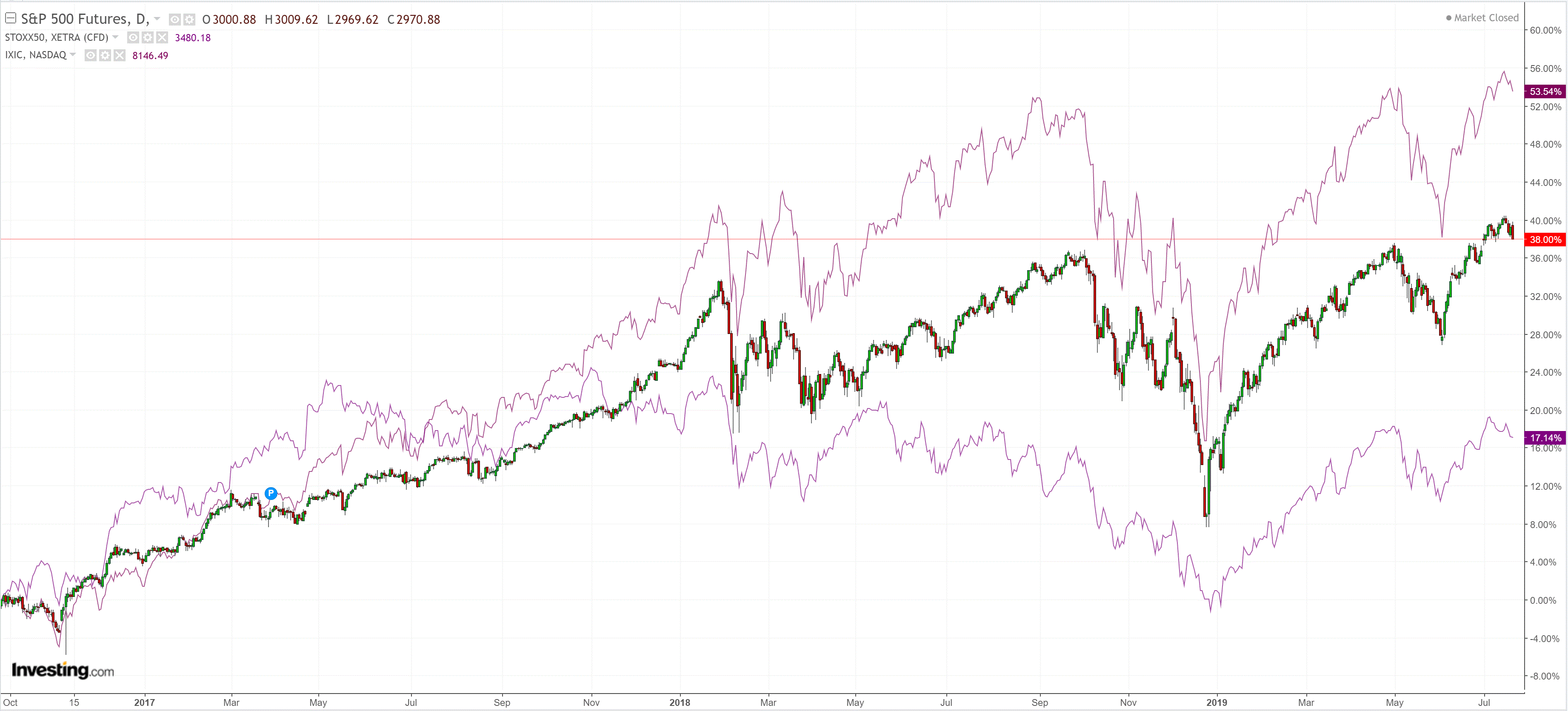
Westpac has the wrap:
Event Wrap
US consumer sentiment held firm near 15-year highs in early July, for yet another month, the Michigan survey coming in at 98.4, little changed from the previous month. Both current conditions and expectations held firm, record highs in US stocks and a solid jobs market keeping sentiment elevated.
Fed dove Bullard said an easing now would be insurance against a slowdown, but favours a 25bp cut (rather than 50bp), and doesn’t expect the Fed will be entering into an easing cycle.
NY Fed officials clarified that earlier remarks by its President Williams – that “it pays to act quickly” when stimulus is needed – were academic and not about possible action at the 31 July meeting.
German June PPI was lower than expected (1.2%y/y, est. 1.5%y/y) – still no inflationary pressures.The Italian Coalition looks more vulnerable as Salvini continues with intent to meet President Mottarella next week in what is seen as a potential move to bring down the coalition and push for early elections.
Event Outlook
Japan: BOJ Governor Kuroda speaks at the IMF in Washington.
The major driver was the Fed going into full reverse after New York Fed President John Williams went uber-dovish. The NY Fed repudiated his speech, via the FT:
The Federal Reserve Bank of New York took the unusual step of clarifying a speech by its president, John Williams, after his remarks stoked expectations of aggressive interest cuts by US policymakers.
Mr Williams on Thursday laid out the case for early monetary easing in a low interest rate environment, likening it to a vaccination for children against illness down the road. “It’s better to deal with the short-term pain of a shot than to take the risk that they’ll contract a disease later on,” he said.
The remarks led markets and some economists to increase their bets that the Federal Open Market Committee would cut interest rates by 50 basis points when it meets later this month, rather than the 25bp that were previously forecast.
Later, however, a New York Fed spokeswoman cautioned against reading too much into the comments by Mr Williams. “This was an academic speech on 20 years of research. It was not about potential policy actions at the upcoming FOMC meeting,” they said.
And there were more leaks at the WSJ:
Federal Reserve officials signaled they are ready to cut interest rates by a quarter-percentage point at their coming meeting, while indicating the potential for additional reductions because they are worried about a slowdown in global growth, an increase in trade-policy uncertainty and a pullback in inflation.
Officials aren’t prepared for bolder action by making a half-point cut, as analysts and traders have speculated in recent days, according to the officials’ recent public statements and interviews.
It appears John Williams forgot to take his pills. Anyways, it makes a lot more sense given 50bps is not necessary and stank of panic given this was only supposed be an “insurance cut”. The latest US indicators are mixed. Regional Fed surveys have bounced suggesting a decent ISM:

The consumer is a pig in shit:

But leading indicators have sagged:

Adding to DXY retracement was dovishness out of Europe, via Spiegel:
European Central Bank President Mario Draghi plans to restart purchases of government bonds by November to support the fragile euro zone economy, German news magazine Der Spiegel cited central bank sources on Friday as saying.
It said Draghi hoped the move would encourage companies to invest more and consumers to consume more.
Draghi’s term is due to end on Oct. 31 and International Monetary Fund chief Christine Lagarde has been nominated to succeed him. The European Parliament will hold a non-binding vote on her appointment, which is expected to be finalised by EU leaders at a regular summit on Oct. 17-18.
Last week, ECB Governing Council member Ignazio Visco said the central bank would need to adopt further expansionary measures if the euro zone economy does not pick up, and that it would consider its options “in the coming weeks”.
The ECB’s Governing Council put off any rate hike for at least a year at its June 5-6 meeting and Draghi opened the door to more stimulus in the following weeks. The Council is due to meet again to discuss monetary policy on July 24-25.
The ECB is considering raising the cost for banks to park their cash at the central bank in a bid to boost bank lending, Der Spiegel reported, citing sources as saying that such a decision was possible in September.
I still can’t see the Fed going deeper than two cuts before any kind of howl from the stock market threatens to derail the consumer. Whether that happens will hang on the risk factors we already know play out: trade war, Iran, Brexit, local demand.
It remains a high risk period for the Australian dollar.

